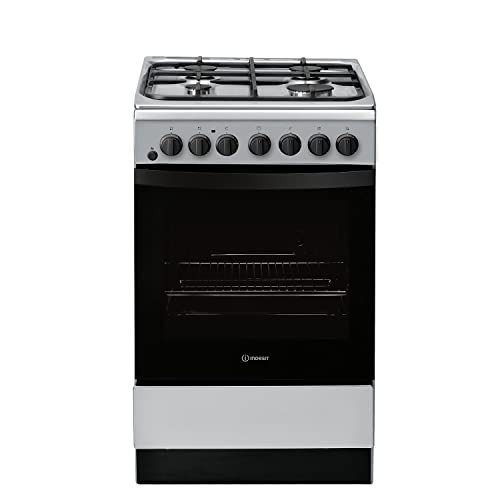The Essential Guide to Oven Hobs: Selecting the Right One for Your Kitchen
When it concerns home cooking, couple of home appliances are as crucial as the oven hob. Oven And Hobs For Sale of devices is necessary for a range of cooking methods-- boiling, frying, simmering, and sautéing. Offered the myriad of options readily available on the market, choosing the perfect oven hob for one's kitchen can be intimidating. This post aims to supply a thorough take a look at oven hobs, discussing their types, functionalities, advantages, drawbacks, and crucial considerations when buying one.
Comprehending Oven Hobs
Oven hobs, frequently called cooktops, are flat cooking platforms that feature burners or heating elements. They can be integrated with an oven or stand-alone. The choice of an oven hob can significantly impact cooking effectiveness and convenience.
Types of Oven Hobs
Oven hobs come in numerous types, each with unique features. Below are the most typical types available:
| Type | Description | Benefits | Disadvantages |
|---|---|---|---|
| Gas Hobs | Uses gas or lp | Instantaneous heat and accurate temperature level control; works well with all cookware | Needs a gas connection; less energy-efficient than electric |
| Electric Hobs | Use electric coils or convected heat | Easy to clean up; constant heat distribution | Slower to warm up; can be less responsive than gas |
| Induction Hobs | Makes use of magnetic fields to heat pots and pans directly | Fast cooking; energy-efficient; easy to tidy | Needs compatible pots and pans; normally more costly |
| Ceramic Hobs | Flat glass-ceramic surface area with glowing heat | Aesthetically pleasing; simple to clean | Can be prone to scratching; slower to heat than induction |
Key Features of Oven Hobs
When selecting an oven hob, numerous features should be considered:
- Size & & Configuration: Available in various sizes, oven hobs can accommodate numerous pots and pans. Standard options are usually 30, 36, or 48 inches wide.
- Power Output: Look for hobs with differing power levels for various cooking processes. High-powered burners are excellent for boiling, while lower-power ones can be used for simmering.
- Control Types: Choose in between knob controls and touch controls. Knobs offer tactile feedback, while touch controls provide sleek designs and additional performances.
- Security Features: Options like automated shut-off, kid locks, and flame failure devices are crucial for preventing mishaps.
- Ease of Cleaning: Choose designs with smooth surfaces or removable parts for easy upkeep.
Advantages and Disadvantages
Understanding the pros and cons of different oven hobs can help in making a notified choice.
Advantages
- Versatility: Suitable for numerous cooking techniques, from boiling to frying.
- Speed: Many hobs heat quickly, specifically induction models.
- Energy Efficiency: Some options, like induction hobs, can reduce energy consumption compared to standard methods.
Disadvantages
- Expense: High-end models, particularly induction hobs, can be costly.
- Setup: Gas hobs require expert setup and a gas supply, which may sustain extra costs.
- Compatibility: Not all pots and pans works on induction hobs, demanding additional purchases.
Purchasing Considerations
When selecting an oven hob, think about the list below elements:
- Cooking Style: Assess how typically and what sort of cooking you do to figure out the very best hob type.
- Kitchen Layout: Measure your kitchen area to guarantee the hob fits and complements other home appliances.
- Spending plan: Determine just how much you want to invest. Consider setup and the expense of any essential pots and pans.
- Energy Source: Evaluate the accessibility of natural gas or the electrical capacity of your kitchen to decide between gas and electric options.
Frequently Asked Questions About Oven Hobs
Q1: What is the distinction between a cooktop and an oven hob?A cooktop and an oven hob usually refer to the very same appliance. Nevertheless,"cooktop "is a more comprehensive term that includes both standalone hobs and integrated units with ovens. Q2: Can I use any cookware on an induction
hob?No, induction hobs require ferrous( magnetic)cookware
to work. Cookware made of product like stainless steel or cast iron appropriates, while aluminum and copper without magnetic homes are not. Q3: How do I tidy my oven hob properly?Cleaning techniques depend on the type of hob.
Generally, a moist fabric and moderate cleaning agent work for glass-ceramic surfaces, while a specific hob cleaner is ideal for induction. Gas hobs require disassembling burners for thorough cleaning. Q4: Are induction hobs safe for cooking?Yes, induction hobs are normally safer than gas hobs as they do not produce an open flame,and the surface cools off rapidly. A lot of designs also feature child security locks. Q5: How often must I change my oven hob?The life expectancy of an oven hob varies based on the type and use. Typically, they last around 10 to 15 years.
Regular maintenance can assist extend this duration. Picking the perfect oven hob for your home can considerably improve your cooking experience. With a comprehensive understanding of the types, features, advantages, and factors to consider, anybody can make an educated option. From the high heat of gas to the performance of induction, there is a hob fit to every culinary requirement. Ultimately, the best oven hob can transform cooking from an ordinary job into an art form, allowing cooking enthusiasts to develop delicious meals with ease.

